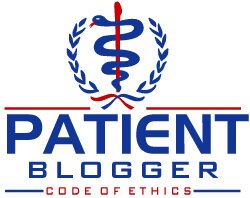Impact of Postnatal Corticosteroid Use on Neurodevelopment at 18 to 22 Months' Adjusted Age: Effects of Dose, Timing, and Risk of Bronchopulmonary Dysplasia in Extremely Low Birth Weight Infants
a Department of Pediatrics, Case Western Reserve University, Cleveland, Ohio
b Department of Statistics, Research Triangle Institute, Research Triangle Park, North Carolina
c Department of Pediatrics, University of Rochester, Rochester, New York
d Department of Pediatrics, University of Texas Southwestern, Dallas, Texas
e Department of Pediatrics, Emory University, Atlanta, Georgia
f Department of Pediatrics, Wayne State University, Detroit, Michigan
g Department of Pediatrics, University of California, San Diego, California
h Department of Pediatrics, Stanford University, Palo Alto, California
i Department of Pediatrics, Indiana University, Indianapolis, Indiana
OBJECTIVE. Postnatal steroid use decreases lung inflammation but increases impairment. We hypothesized that increased dose is associated with increased neurodevelopmental impairment, lower postmenstrual age at exposure increases impairment, and risk of bronchopulmonary dysplasia modifies the effect of postnatal corticosteroid.
METHODS. Steroid dose and timing of exposure beyond 7 days was assessed among 2358 extremely low birth weight infants nested in a prospective trial, with 1667 (84%) survivors examined at 18 to 22 months' postmenstrual age. Logistic regression tested the relationship between impairment (Bayley Mental Developmental Index/Psychomotor Developmental Index of <70,> palsy, or sensory impairment), total dose (tertiles: <0.9, 0.9–1.9, and  1.9 mg/kg), and postmenstrual age at first dose. Separate logistic regression tested effect modification according to bronchopulmonary dysplasia severity (Romagnoli risk > 0.5 as high risk, n = 2336 (99%) for days of life 4–7).
1.9 mg/kg), and postmenstrual age at first dose. Separate logistic regression tested effect modification according to bronchopulmonary dysplasia severity (Romagnoli risk > 0.5 as high risk, n = 2336 (99%) for days of life 4–7).
RESULTS. Three hundred sixty-six (16%) neonates were steroid-treated (94% dexamethasone). Treated neonates were smaller and less mature; 72% of those treated were at high risk for bronchopulmonary dysplasia. Exposure was associated with neurodevelopmental impairment/death. Impairment increased with higher dose; 71% dead or impaired at highest dose tertile. Each 1 mg/kg dose was associated with a 2.0-point reduction on the Mental Developmental Index and a 40% risk increase for disabling cerebral palsy. Older age did not mitigate the harm. Treatment after 33 weeks' postmenstrual age was associated with greatest harm despite not receiving the highest dose. The relationship between steroid exposure and impairment was modified by the bronchopulmonary dysplasia risk, with those at highest risk experiencing less harm.
CONCLUSIONS. Higher steroid dose was associated with increased neurodevelopmental impairment. There is no "safe" window for steroid use in extremely low birth weight infants. Neonates with low bronchopulmonary dysplasia risk should not be exposed. A randomized trial of steroid use in infants at highest risk is warranted.**As published in the March 3, 2009 Journal of the American Academy of Pediatrics***


2 comments:
What's the story with PRE-natal steroids? The last time I read about it, I remember that 1 round was considered safe, but multiple courses were not. Is that wishful remembering on my part? (I had one 2-shot steroid course less than 2 weeks before Claire was born.)
Are any studies finding brain damage from those steroids that outweigh the benefits to the lungs?
Helen Harrison to Kathy:
There is a study from Stanford looking at the effects of one dose of beta methasone in the prenatal period on babies who went on to be born at full term.
Compared to a control group that was equally "at risk" for prematurity but *not* given prenatal steroids, the babies who were treated had lower growth, and, disturbingly, lower head circumference (indicating a problem with brain growth and development).
This is, to my knowledge, the first research to try to study the effects of prenatal single dose of beta methasone in term-born humans (it's been done in lab animals and shows negative effects on brain growth and behavior -- to the extent this can be reliably determined in lab animals).
Because the children in the Stanford study were born at term, this separates out the perinatal factors involved with preterm delivery and NICU care. The control goup and the experimental group both had similar risk factors for preterm delivery -- so the possibility of prenatal influences other than steroids has been controlled for.
I gave more information on this study in the previous steroid post.
Of course, the result of just one study doesn't necessarily prove harm, but clearly this an area of concern and more research should be forthcoming.
This study also does not address the comparative risks of lung problems versus the risk of prenatal steroids. To the extent that this has been studied, I'd still go with the *single* dose of prenatal steroids.
Single doses of prenatal steroids are probably not harmless, but they may be a lesser evil than being on a ventilator with lung disease. At least, that's how it looks to me right now.
I'm particularly interested in having someone look at the babies who went on to term after receiving prenatal steroids to see if there is an increase in autism among these children relative to children (at similar prenatal risk) who did not get the prenatal steroids.
When you look at the increase in autism, it has paralleled the use of prenatal/postnatal steroids.
We are seeing about a 20- 25% rate of positive autism screenings in the first two years in preemies, but there are so many confounding variables with this population. I think studying the full-term exposed children should give some important answers.
Helen
Post a Comment